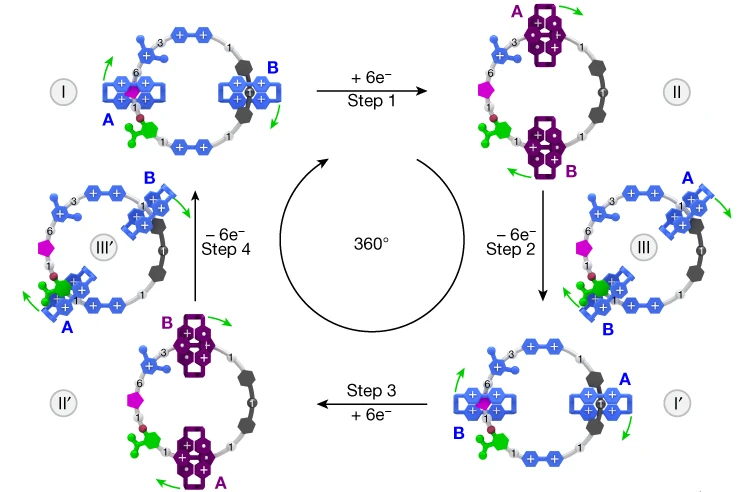Artificial Molecular Motor Powered by Electricity
A team of researchers have developed a molecular motor that is capable of converting electrical energy into unidirectional motion while in solution. The design of the motor was inspired by previous investigations on artificial molecular pumps that are driven by cycles of reduction and oxidation reactions, known as redox cycles. The motor is made up of two small rings attached to a larger loop, and when an electrical current is applied, the two rings move continuously in one direction around the loop.
The researchers behind the development of the electric molecular motor used various techniques to characterize the topology and motion of the motor in different redox states. These techniques included determining the negative and positive voltages needed to induce the reduction and oxidation reactions that drive the movement of the rings around the loop, as well as swapping a heavy isotope of hydrogen called deuterium for the hydrogen atoms in one of the two small rings. This allowed them to monitor the positions of the two small rings over the course of one redox cycle and determine the directionality of their motion. The team found that the two rings move by 180° around the loop with each redox cycle. They also used quantum mechanical calculations to examine the various energy states of the motor and visualized them as a 2D energy landscape. This landscape enables the motor’s unidirectionality and the cooperation between the movement of the two rings.
In conclusion, the design and synthesis of a molecular motor that converts electrical energy into unidirectional motion while in solution is a significant achievement in the field of chemistry, physics, and molecular nanotechnology. The next step for the researchers is to attach the motor to surfaces, which would enable spatially directed rotation of the loop and convert electrical energy into mechanical energy at a surface. This discovery opens up the potential for the development of more efficient and versatile molecular motors in the future.

Molecular analogues to macroscopic machines always capture the imagination, and this paper is no exception. The hurdles that need to be overcome to give electrically powered directional precessive motion on this scale are significant, and this paper achieves such motion elegantly and convincingly. This motor will hopefully be a building block to create ever more complex molecular machinery that can be electrically driven. — Claire Hansell, Senior Editor and Team Manager, Nature
Written by Happy Daze
Image by Zhang, L. et al. & Nature
